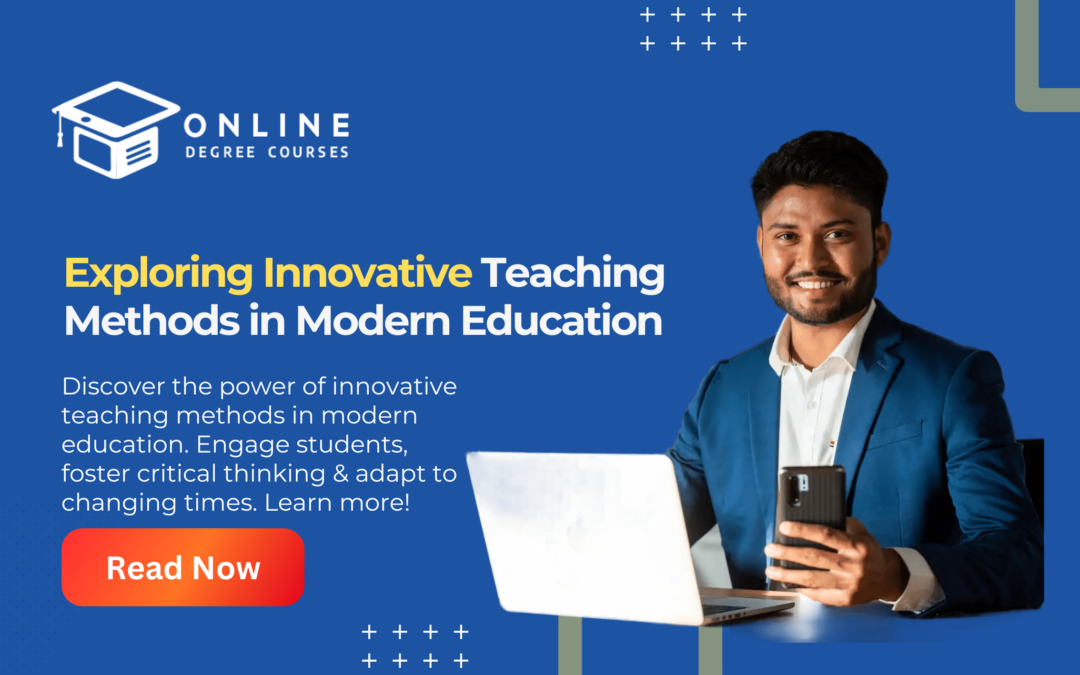Introduction: In today’s rapidly evolving world, education has seen a remarkable transformation with the integration of innovative teaching methods. These methods are designed to enhance student engagement, foster critical thinking, and cater to the diverse learning needs of students.
Embracing these novel approaches not only creates an enriched learning environment but also prepares students for the challenges of the future.
Table of Contents
Flipped Classroom
One of the most popular innovative teaching methods is the flipped classroom. In this approach, students are exposed to pre-recorded lectures or reading materials before the class. During class time, teachers engage students through discussions, activities, and problem-solving exercises. This approach enhances active learning and encourages students to take ownership of their education.
Project-Based Learning
Project-based learning (PBL) immerses students in real-world problems, promoting critical thinking and problem-solving skills. By working collaboratively on projects, students acquire knowledge through hands-on experiences, fostering creativity and building confidence. PBL also enables students to develop practical skills that can be applied in various professional settings.
Gamification
Integrating gamification in education involves using game-like elements in the learning process. By applying game mechanics, such as points, rewards, and challenges, educators can make learning more engaging and enjoyable. Gamification enhances motivation, persistence, and active participation among students, making complex subjects more approachable and enjoyable.
Technology-Enhanced Learning
With the advancement of technology, educators can leverage various tools and platforms to create interactive and immersive learning experiences. Online quizzes, virtual simulations, and multimedia presentations enrich the learning process and allow students to grasp complex concepts more effectively.
Collaborative Learning
Encouraging collaborative learning fosters a sense of community and teamwork among students. Group discussions, team projects, and peer-to-peer learning promote communication skills, empathy, and understanding of diverse perspectives.
Blended Learning
Blended learning combines traditional classroom teaching with online learning components. This hybrid approach allows students to access course materials, collaborate with peers, and engage in self-paced learning through digital platforms. Blended learning caters to different learning styles and offers flexibility in the learning process.
Inquiry-Based Learning
Inquiry-based learning empowers students to explore topics of interest and seek solutions to real-world problems. By posing thought-provoking questions, educators encourage students to investigate, analyze, and draw conclusions independently. This method nurtures curiosity and a thirst for knowledge.
Mind Mapping and Visual Aids
Using mind maps and visual aids in teaching facilitates better retention of information. These graphical representations organize complex concepts, making them more accessible and memorable. Visual learning enhances comprehension and helps students make connections between different ideas.
Conclusion
Innovative teaching methods revolutionize the learning experience, making it more engaging, effective, and student-centered. By adopting these approaches, educators can empower students to become lifelong learners, critical thinkers, and problem solvers.
Embracing innovation in education prepares students to thrive in a dynamic and rapidly changing world, equipping them with the skills and knowledge needed for success in their personal and professional lives.

